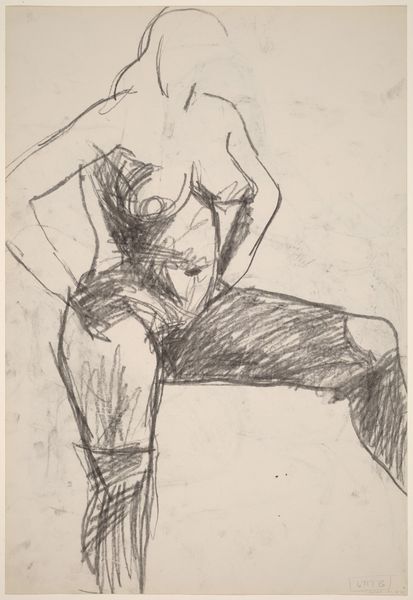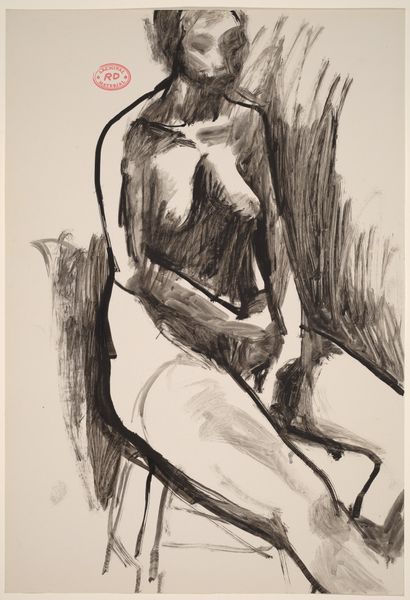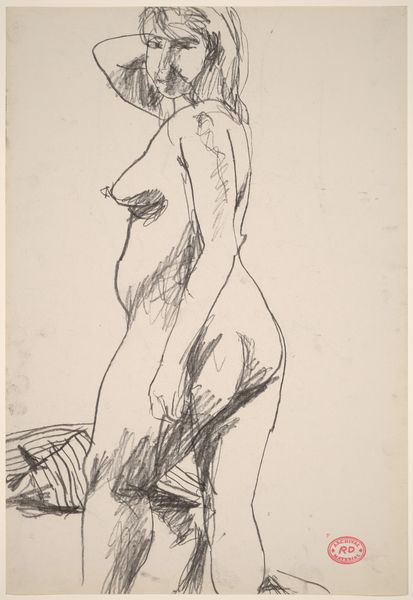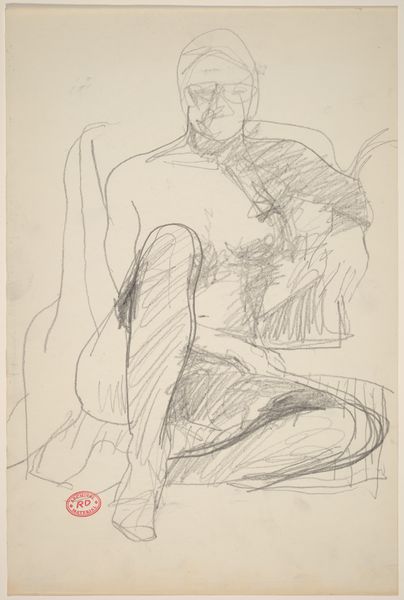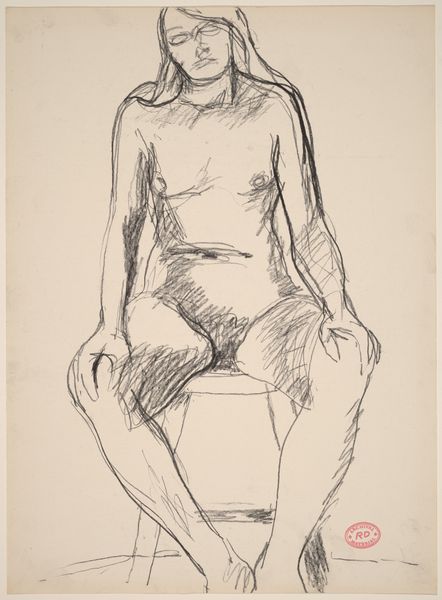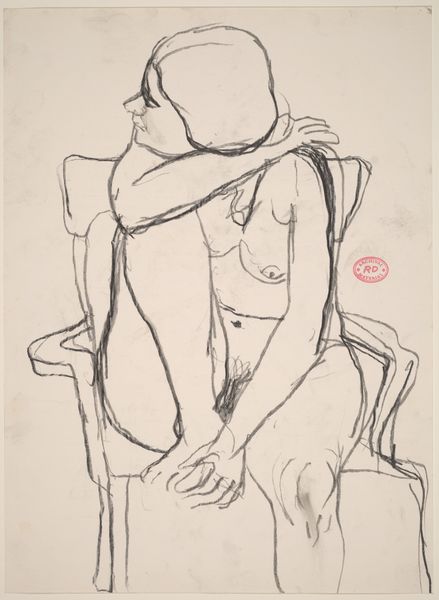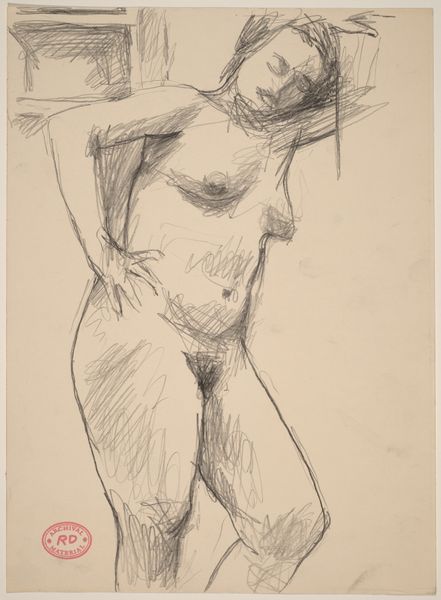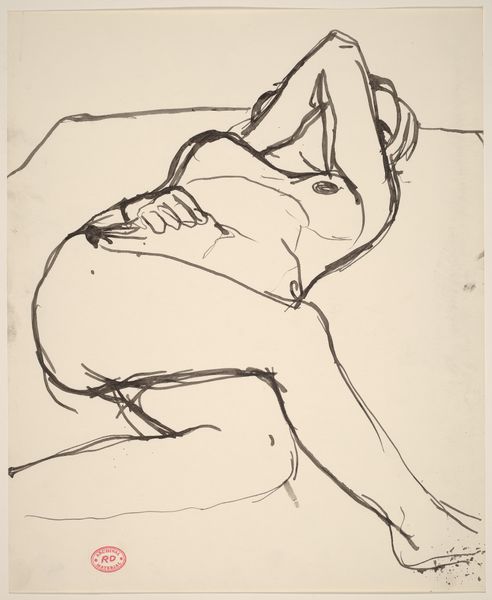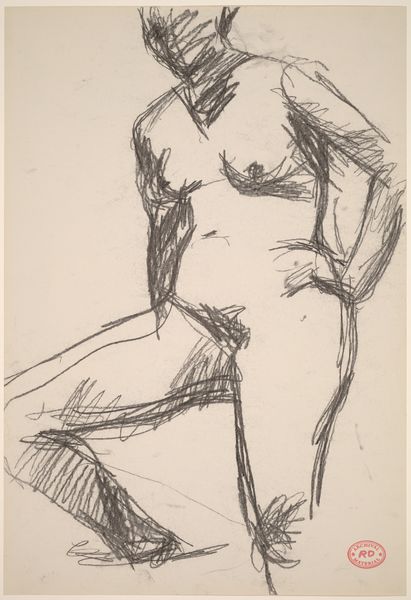![Untitled [nude seated with her left foot in chair seat] by Richard Diebenkorn](/_next/image?url=https%3A%2F%2Fd2w8kbdekdi1gv.cloudfront.net%2FeyJidWNrZXQiOiAiYXJ0ZXJhLWltYWdlcy1idWNrZXQiLCAia2V5IjogImFydHdvcmtzL2JiNWJjYjJmLWRiZGItNDYxOS05MWJjLTIwNTY1YjFmNGY0ZS9iYjViY2IyZi1kYmRiLTQ2MTktOTFiYy0yMDU2NWIxZjRmNGVfZnVsbC5qcGciLCAiZWRpdHMiOiB7InJlc2l6ZSI6IHsid2lkdGgiOiAxOTIwLCAiaGVpZ2h0IjogMTkyMCwgImZpdCI6ICJpbnNpZGUifX19&w=3840&q=75)
Untitled [nude seated with her left foot in chair seat] 1955 - 1967
0:00
0:00
drawing, pencil
#
portrait
#
drawing
#
figuration
#
bay-area-figurative-movement
#
pencil drawing
#
pencil
#
portrait drawing
#
academic-art
#
nude
Copyright: National Gallery of Art: CC0 1.0
Curator: This is an untitled pencil drawing of a nude figure by Richard Diebenkorn, made sometime between 1955 and 1967. Editor: There's a real sense of melancholy that pervades this drawing. The loose, almost frenetic linework, creates a feeling of unease. It's quite powerful. Curator: Precisely. Diebenkorn's use of line here is masterful. Notice how he employs hatching and cross-hatching to create volume and shadow, while leaving much of the figure open and unfinished. It emphasizes the two-dimensionality of the picture plane itself. Editor: But what does that choice, that conscious use of "unfinished" lines, say about the representation of the female form here? We are, after all, engaging with a nude. Considering the timeframe, this seems less about idealization and more about raw representation—an intentional subversion of the male gaze perhaps? Curator: An intriguing thought, yet the gesture toward academic figure study remains palpable. It is worthwhile to observe how the artist constructs a figure that implies both volume and structure, simultaneously negating traditional contours in favor of tonal variation. Editor: I would propose this deliberate incompletion might also hint at the psychological interior of the sitter, suggesting a discomfort, or perhaps a quiet defiance. Is this perhaps a dialogue, in charcoal, with prevalent modes of representation in the 1960s? Curator: It cannot be overlooked how the restricted palette directs one’s attention to the interplay of light and shadow. Notice the subtle variations in tone achieved simply with a pencil; in essence, he renders light almost tangible, doesn't he? Editor: Yes, absolutely. But this tactile quality of light isn’t merely aesthetic, I think. It enhances the intimacy of the encounter between artist and subject, hinting at the female figure's interiority, even resistance to traditional, romantic portrayals of the period. Curator: Well, it has provided us with a focused, albeit divergent, means of discussing this interesting drawing. Editor: Indeed. I find myself contemplating not just what we see, but what remains unsaid, or rather, un-drawn.
Comments
No comments
Be the first to comment and join the conversation on the ultimate creative platform.



